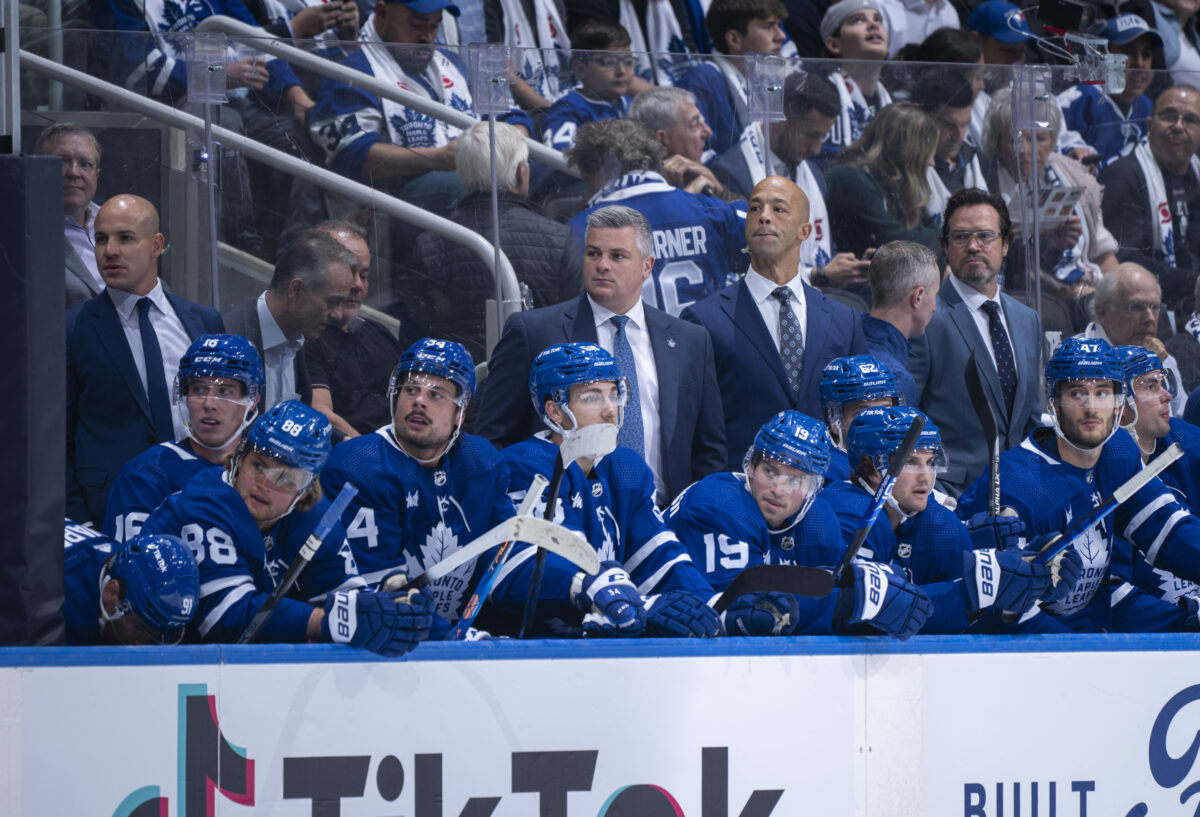The Toronto Maple Leafs enjoyed four days off to spend time with their families over the holidays. It was a chance to unwind and reset for a very busy January. Unfortunately, any stress that Sheldon Keefe may have stripped away over the break was quickly thrown back on him with another brutal example of NHL officiating. Of course, no one can say anything about the referees, and there are missed calls all over the ice, impacting every team. But, the boys in the stripped suits seem to be aiming at Toronto, which could be trouble.

It was just over a week ago that a linesman, Dan Kelly, aggressively pushed Michael Bunting, not once but twice. It was a video played repeatedly and talked about for days. Rarely, if ever, does an official get physical with a player; sure, sometimes they have to apply some muscle to break up a scrum, but pushing a player was way over the line.
Maple Leafs Favourites or Foes
But was that push a more significant sign, a problematic one? So it was earlier this month when Calgary Flames head coach, Darryl Sutter, implied the Maple Leafs get the calls. After his team lost and took seven penalties in Toronto, Sutter said, “That’s one thing I learned a long time ago — when you’re in Chicago all those years, and you come into Toronto, you know what goes on. I won’t say nothing more.” However, the Flames are the fifth most penalized team in the league, so apparently, that “goes on” a lot!
But did Sutter say enough to plant a seed with the officials? Again, there are missed calls on every play, and most will agree it’s fair if it’s called the same both ways. But when a guy takes a stick to the face and comes up bloody, and there is no call after a missed interference call that gave the St. Louis Blues a goal and tied the game, you have to wonder what is going on.
Related: Maple Leafs Criticism of Officials Could Have Long-Term Implications
Maple Leafs Numbers Don’t Tell the Story
The Maple Leafs are ranked 18 for drawing penalties and 23 for taking them. On average, Toronto draws 3.92 penalties a game and gives up 3.69. Those numbers don’t appear to be favouring the blue and white or the opposition. Still, the numbers don’t consider the game situations, like when the penalties are called and when they are not. For example, in the final two minutes of a tie game, when a player is bloodied with a blatant high stick.
Let’s do a quick recap. Keefe, who seemed to be seething throughout the game, could barely stay on the bench after a missed interference, also known as a pick, led to the game-tying goal. Keefe told the referees to wake up (he used some different language, but you’re catching my drift).
Then late in the tie game, Zach Aston-Reese took a blatant stick in the face. It wasn’t intentional; most high sticks are not deliberate because the official usually catches them. The player reacts by pulling away quickly and covering their mouth while looking directly at the official. The next move is to check for blood. Aston-Reese did just that and was bleeding, but the referee did not put his arm up. Keefe, who has said some negative things about officials in the past, was careful with his words when asked about the stripe’s performance, “Watching Zach Aston-Reese getting sewn up on the table after the game is a little hard to take. But we’re happy with the two points.”
Good teams, and make no mistake Toronto is a good team, keep it out of the officials’ hands as much as possible. But after a linesman pushed a player and refs looked the other way when another player was left bloodied, Toronto has to be concerned with the trend.
